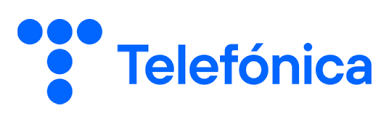Telefónica planning to deploy Standalone 5G beginning in 2022
Spanish telecommunications operator Telefónica has acquired equipment from Swedish vendor Ericsson with the aim of replacing some gear previously deployed by Chinese vendor Huawei, local newspaper Expansion reported.
A source at the Spanish telco had confirmed the Expansion report.
The replacement of 5G mobile network equipment is part of Telefónica’s strategy announced in 2019 to diversify suppliers, according to the source.
The report noted that Telefónica had initially rolled out some equipment manufactured by Huawei before seeking to secure alternative supplies for its 5G network.
The source at Spanish telco declined to say how much equipment Telefónica bought from Ericsson or when the purchase was made.
The government of the United States had been previously urging some of its key allies to remove and replace 5G kits developed by Chinese companies over security concerns.
The United States government has alleged that Huawei’s gear could be used by the Chinese regime for espionage. Both Huawei and the Chinese government have repeatedly denied the allegations.
Telefónica previously said it expects to begin the deployment of 5G Standalone (SA) services during 2022.
The three initial use cases developed by Telefónica Tech and to be sold by the telco’s enterprise division Telefónica Empresas from January 2022 are: Automated guided robot vehicles for use in places including warehouses; remote maintenance systems using technology including smart glasses; and drones for site surveillance.
The telco said that the automated guided vehicles for industrial use are connected through an IoT visualization and route planning platform, to manage communication with them in a bidirectional way, which facilitates performing repetitive tasks without human intervention. This use case, which is especially suitable for the industrial, logistics and transport sector, can work in both LTE and 5G environments.
The remote assistance service, optionally including augmented reality, allows equipment to be operated or repaired in real time, without the need to be physically at the location of the site where the incident is occurring, the carrier said. For this, the company added, a remote monitoring and assistance platform is used to which devices such as a smartphone, a tablet or smart glasses are connected, which simplify the work of technicians in the field.
Telefónica added the identified applications would be fully supported by its current Non-Standalone 5G technology and LTE. The three offerings are being sold either using its public mobile network or alongside a full private deployment.
In July 2021, Telefónica officially announced its decision to award the contracts to deploy its 5G standalone radio networks across Spain to Nordic vendors Ericsson and Nokia.
The deployment of Nokia and Ericsson 5G SA networks will be carried out on the 3.5 GHz and 700 MHz bands, Telefónica said.
Telefónica currently offers 5G coverage to over 80% of the Spanish population. During the first half of 2021, the deployment of 5G has focused on completing coverage in the cities deployed last year and reaching cities with more than 20,000 inhabitants.
All the provincial capitals and autonomous cities, 100% of the cities with more than 50,000 inhabitants and 98% of those with more than 20,000 inhabitants, as well as small towns in all the autonomous communities already have 5G, the Spanish telco said.
Telefónica’s 5G network currently combines the deployment of 5G NSA and DSS (Dynamic Spectrum Sharing).

